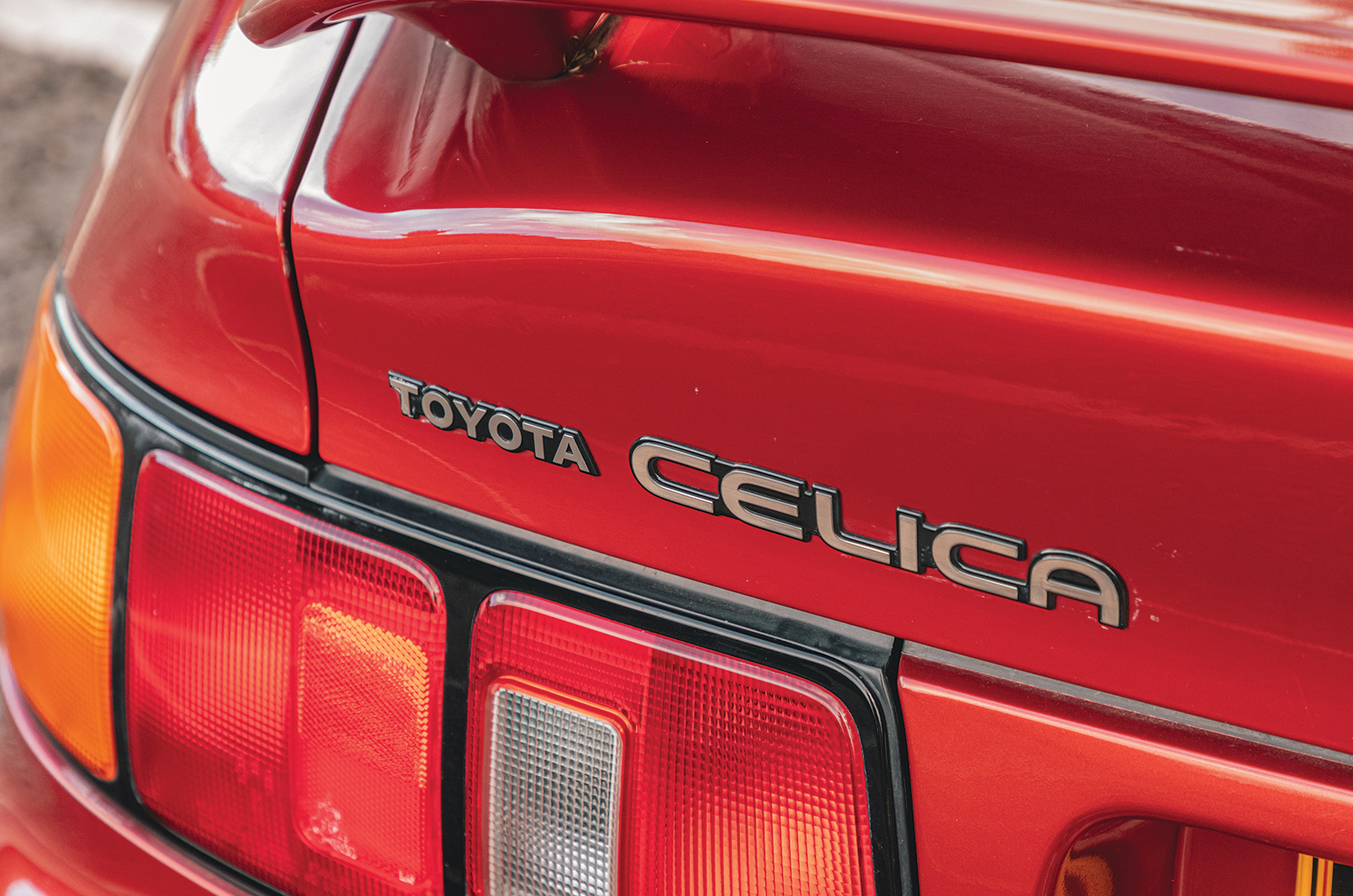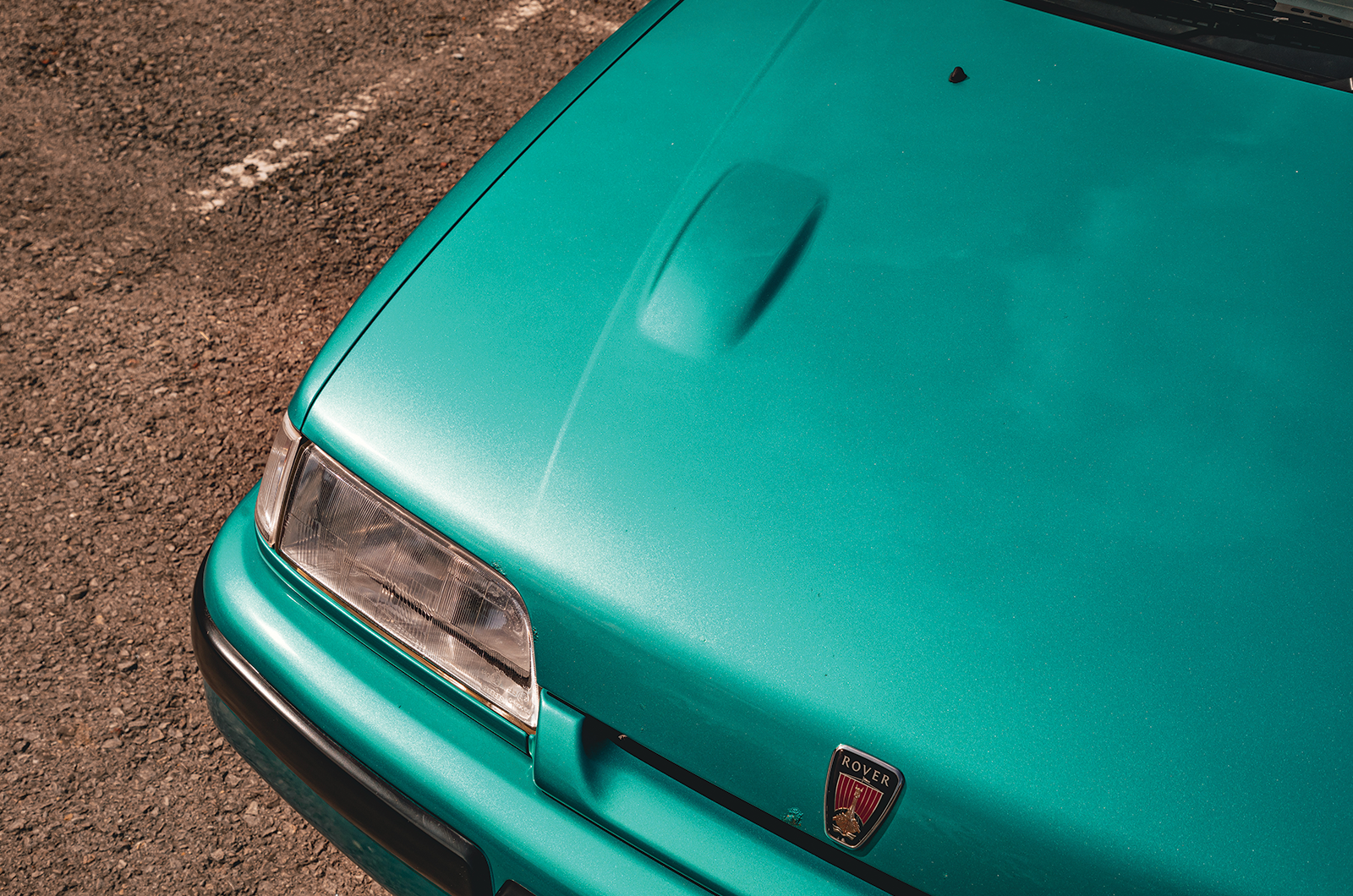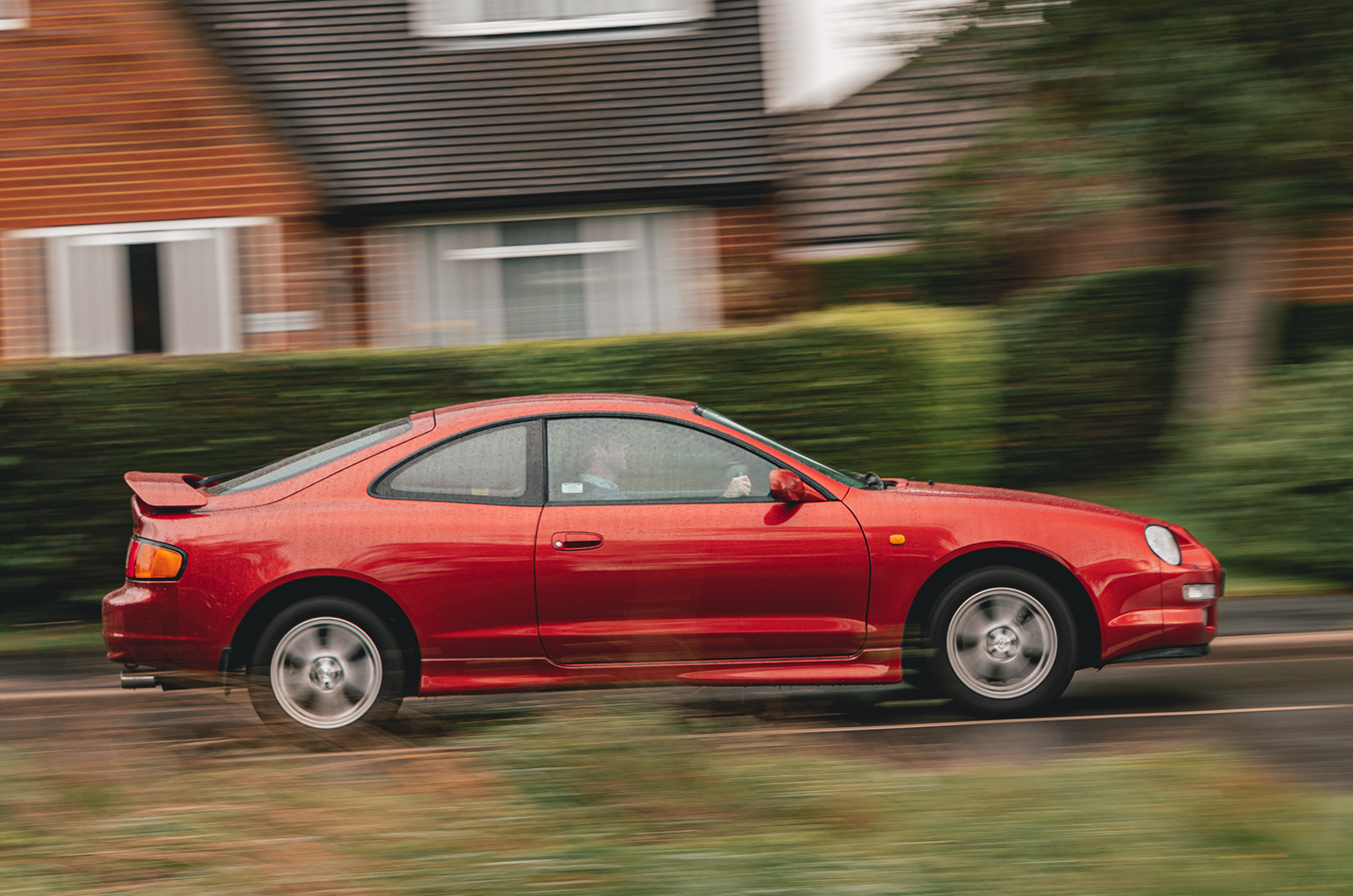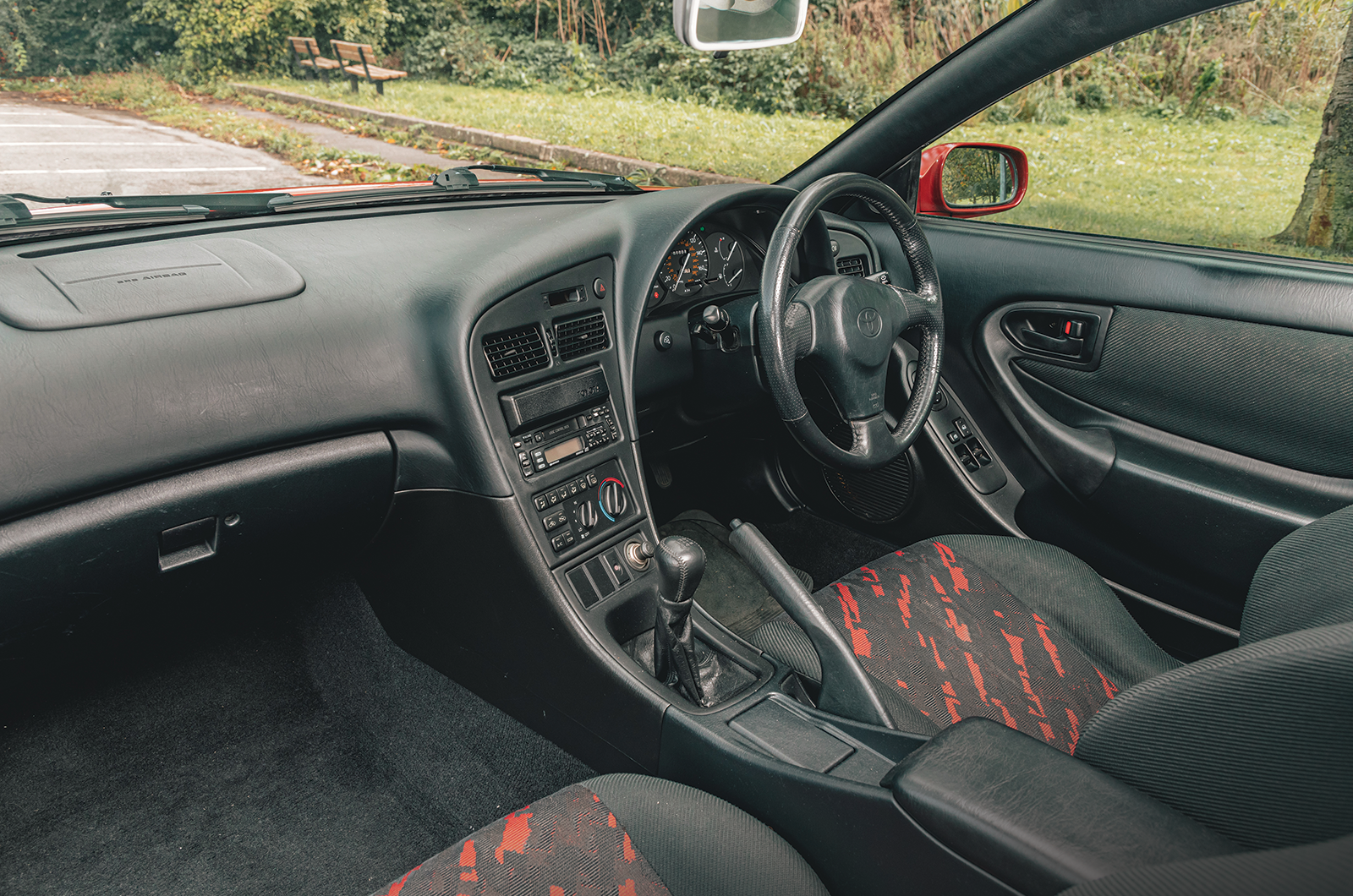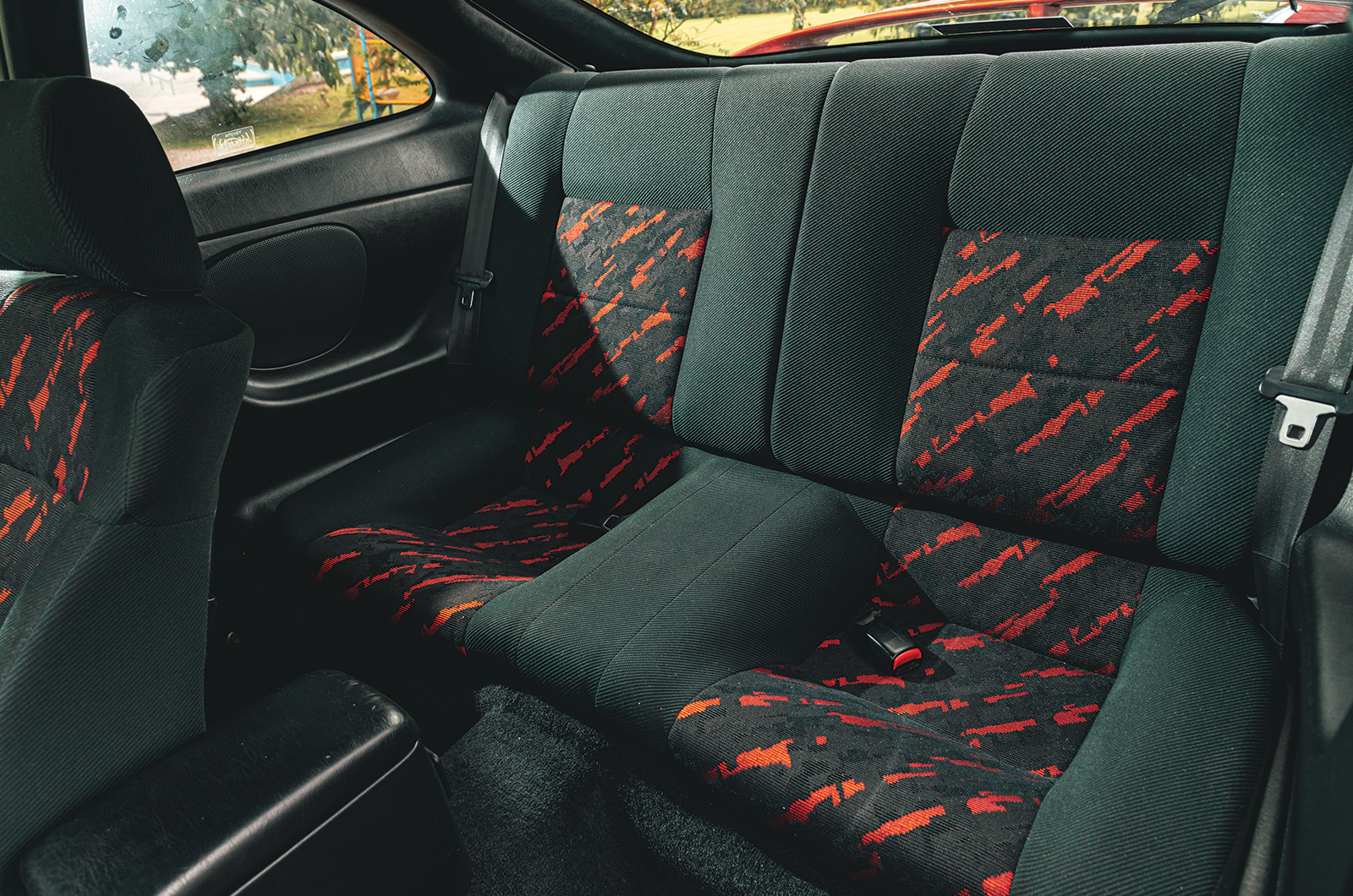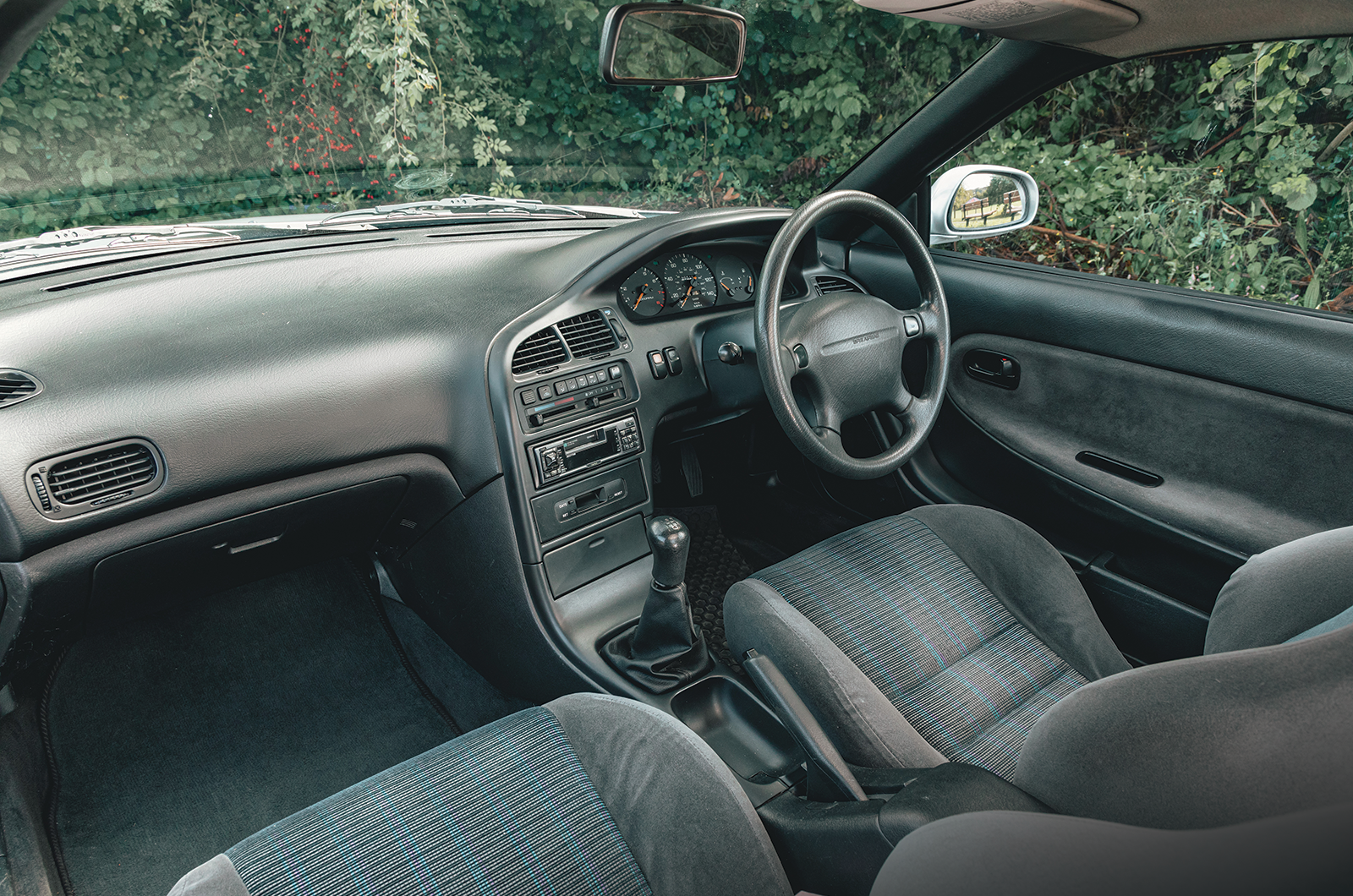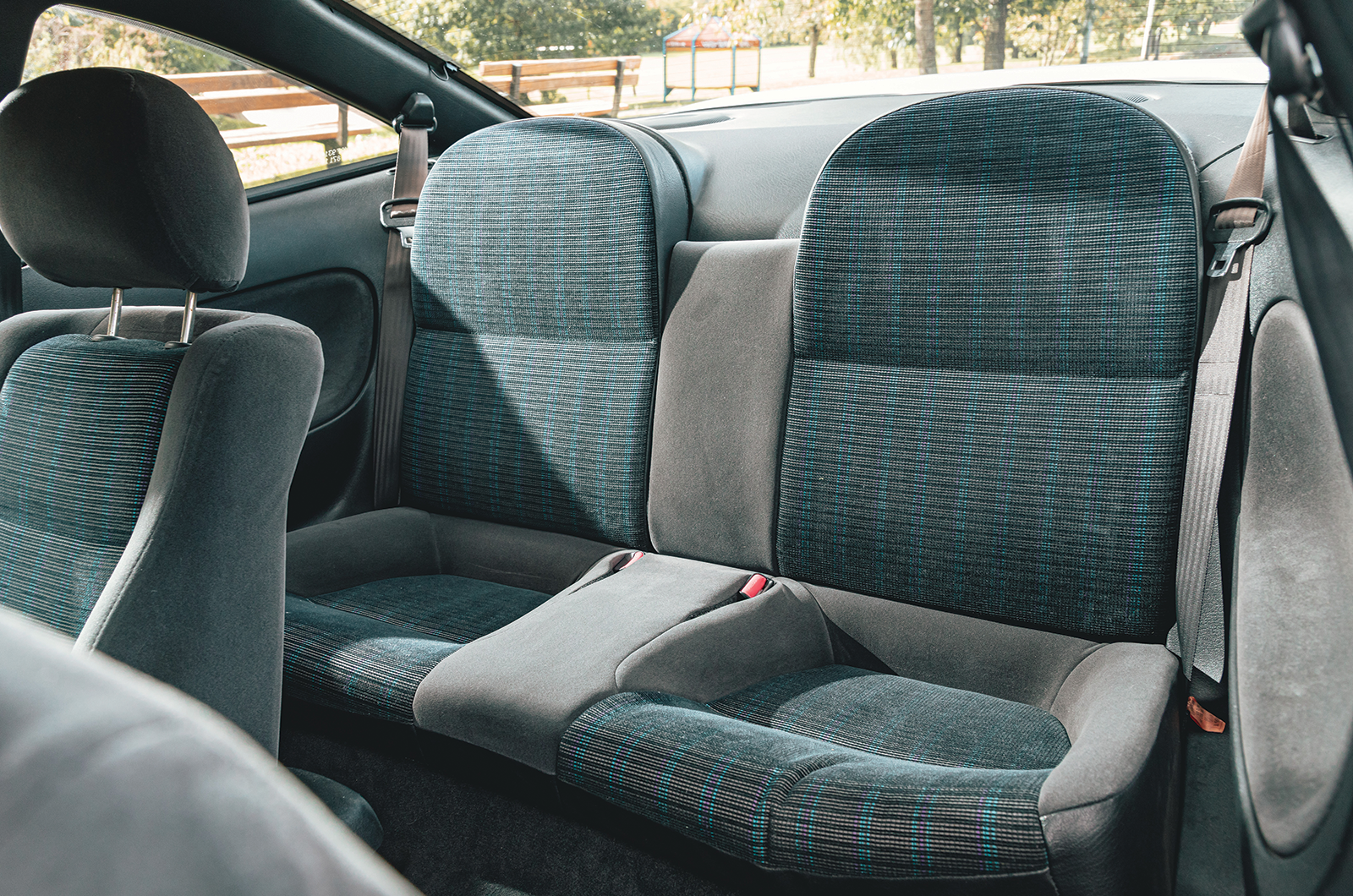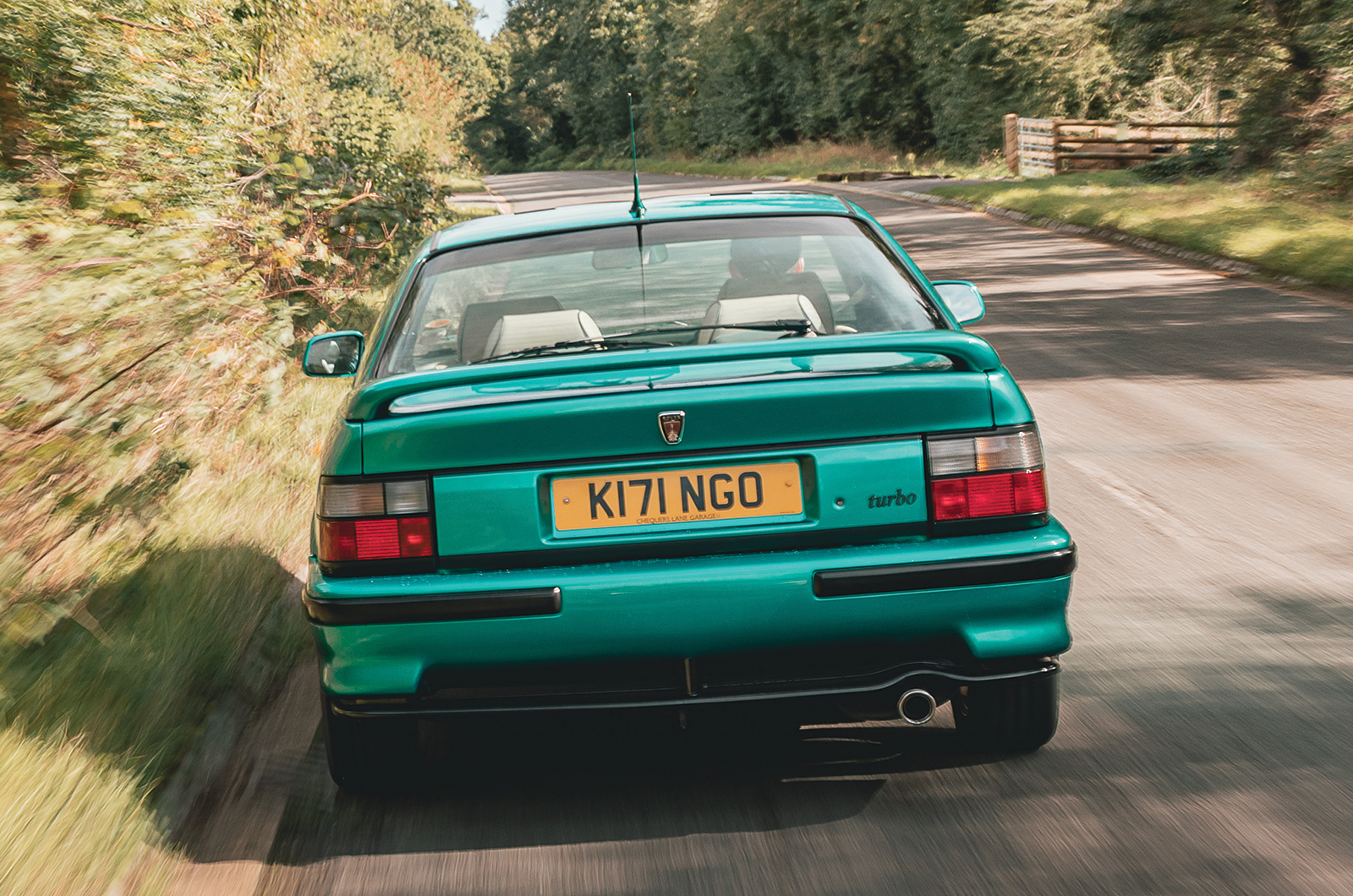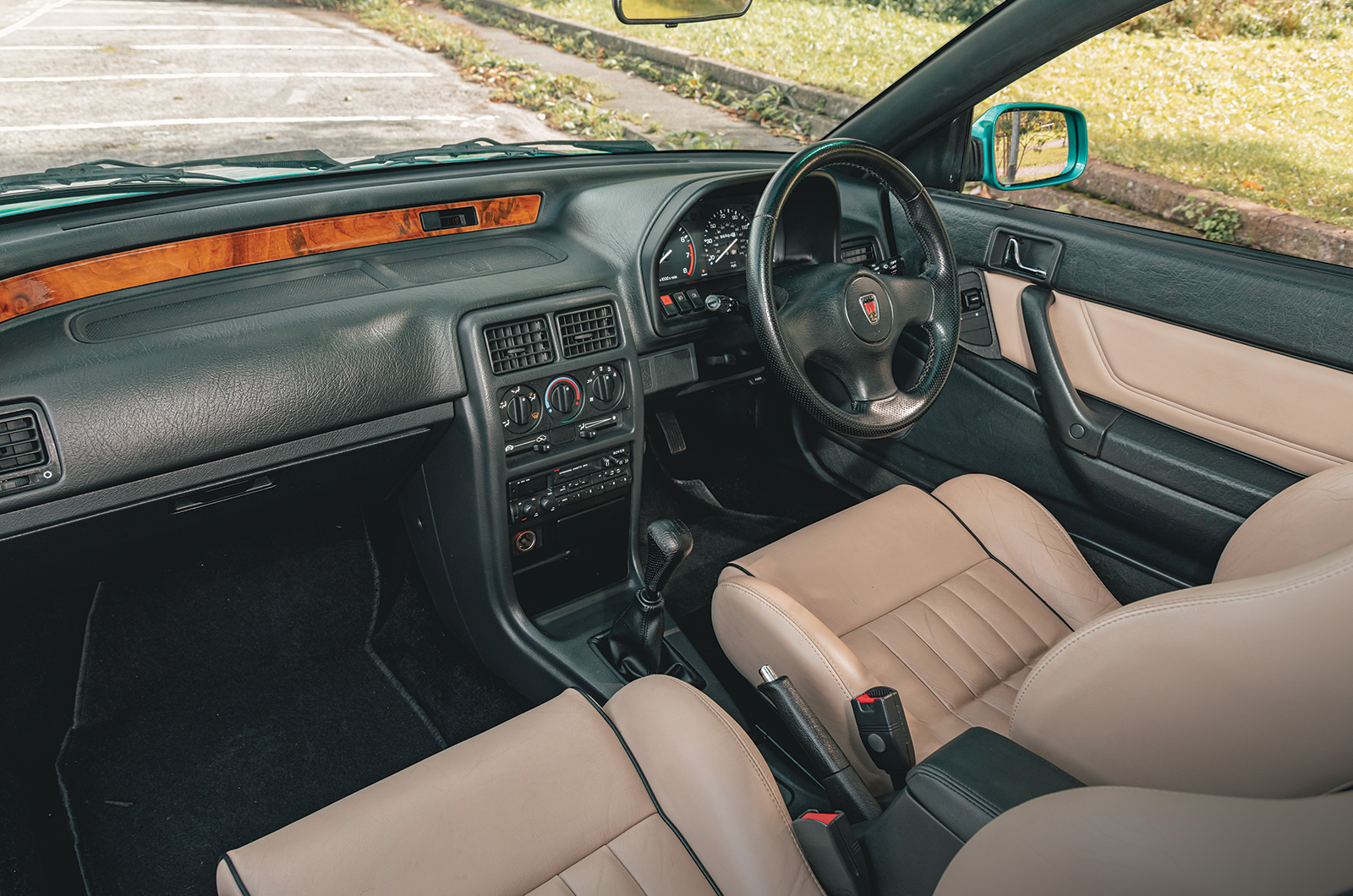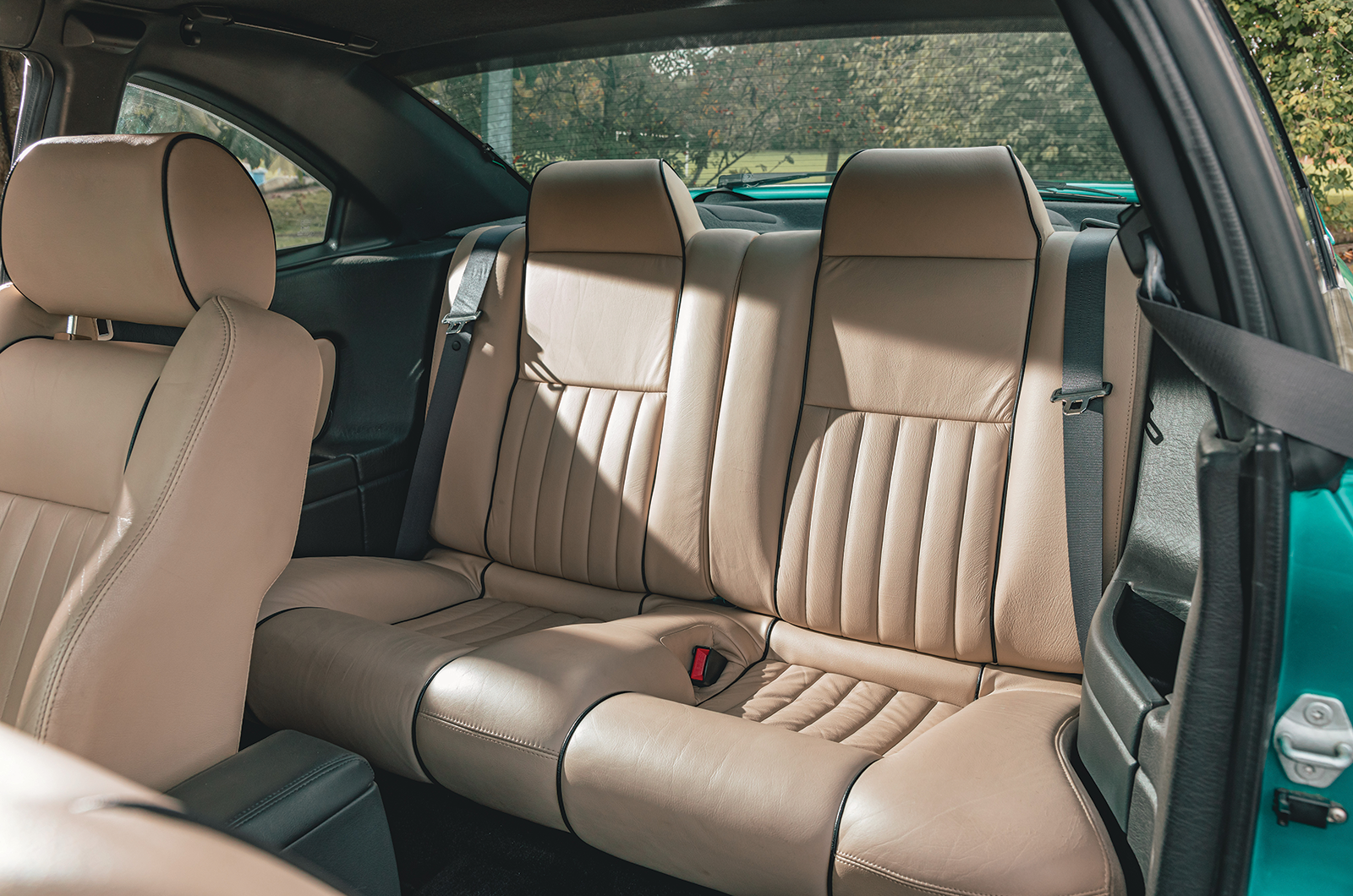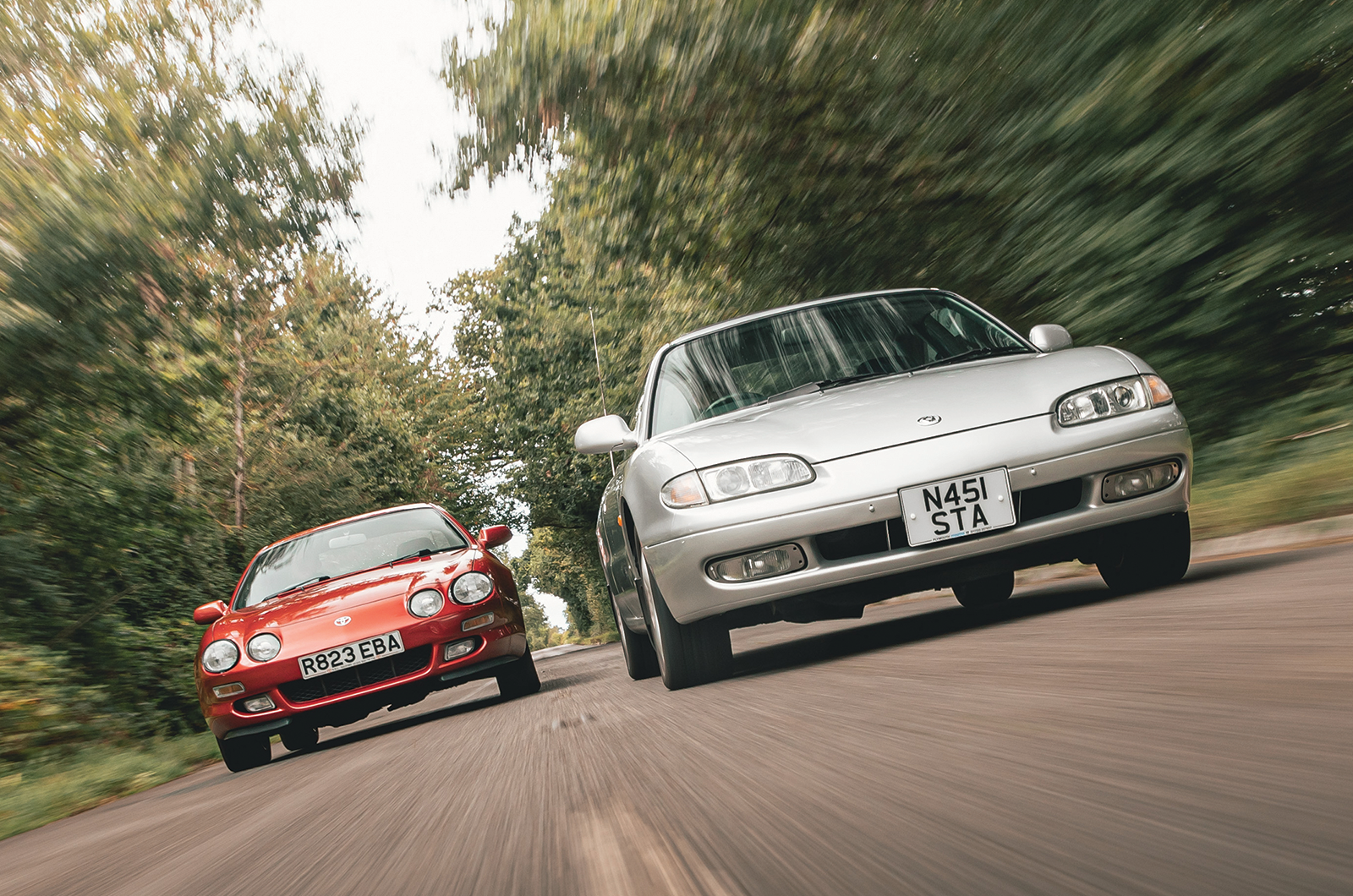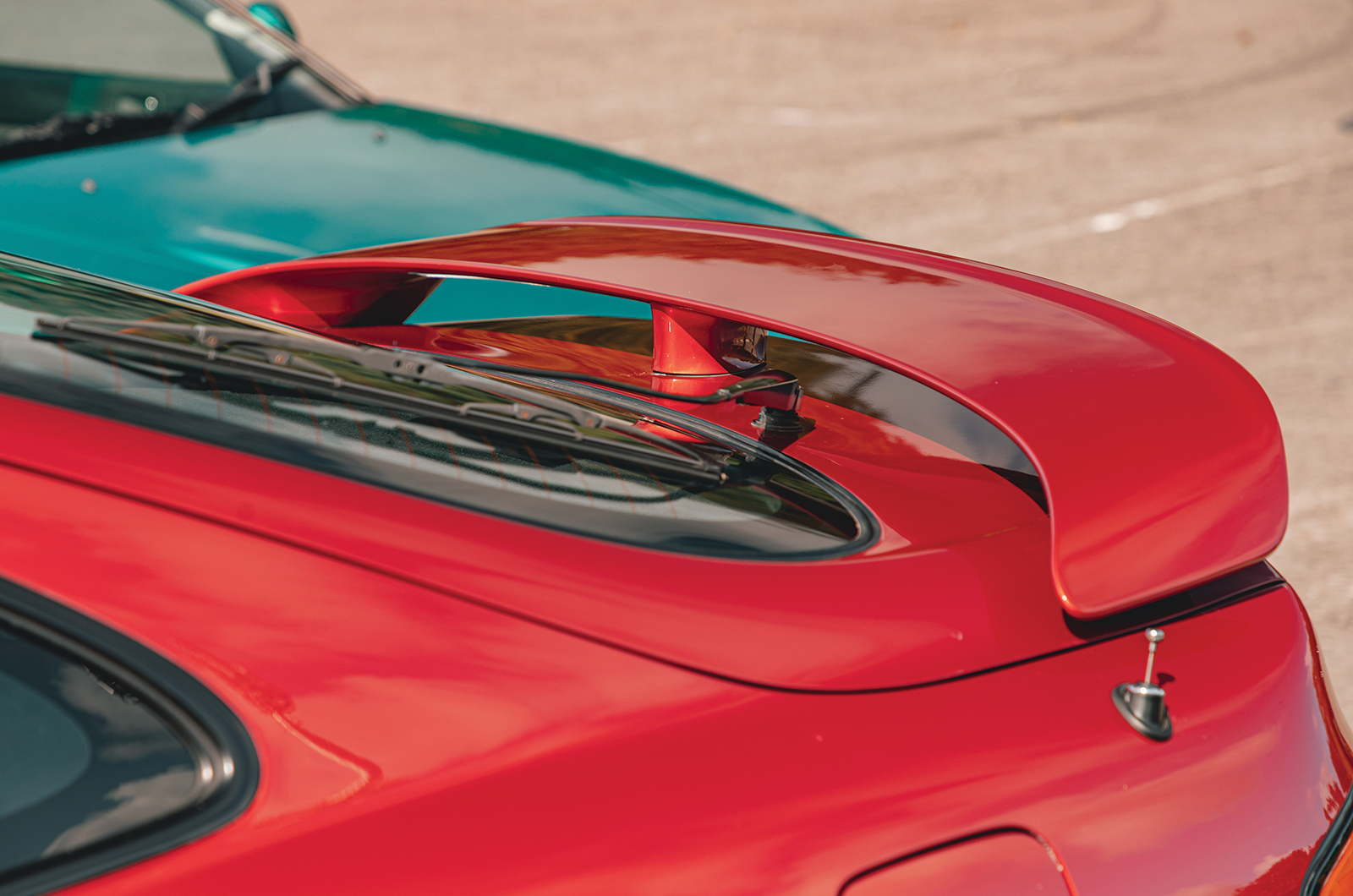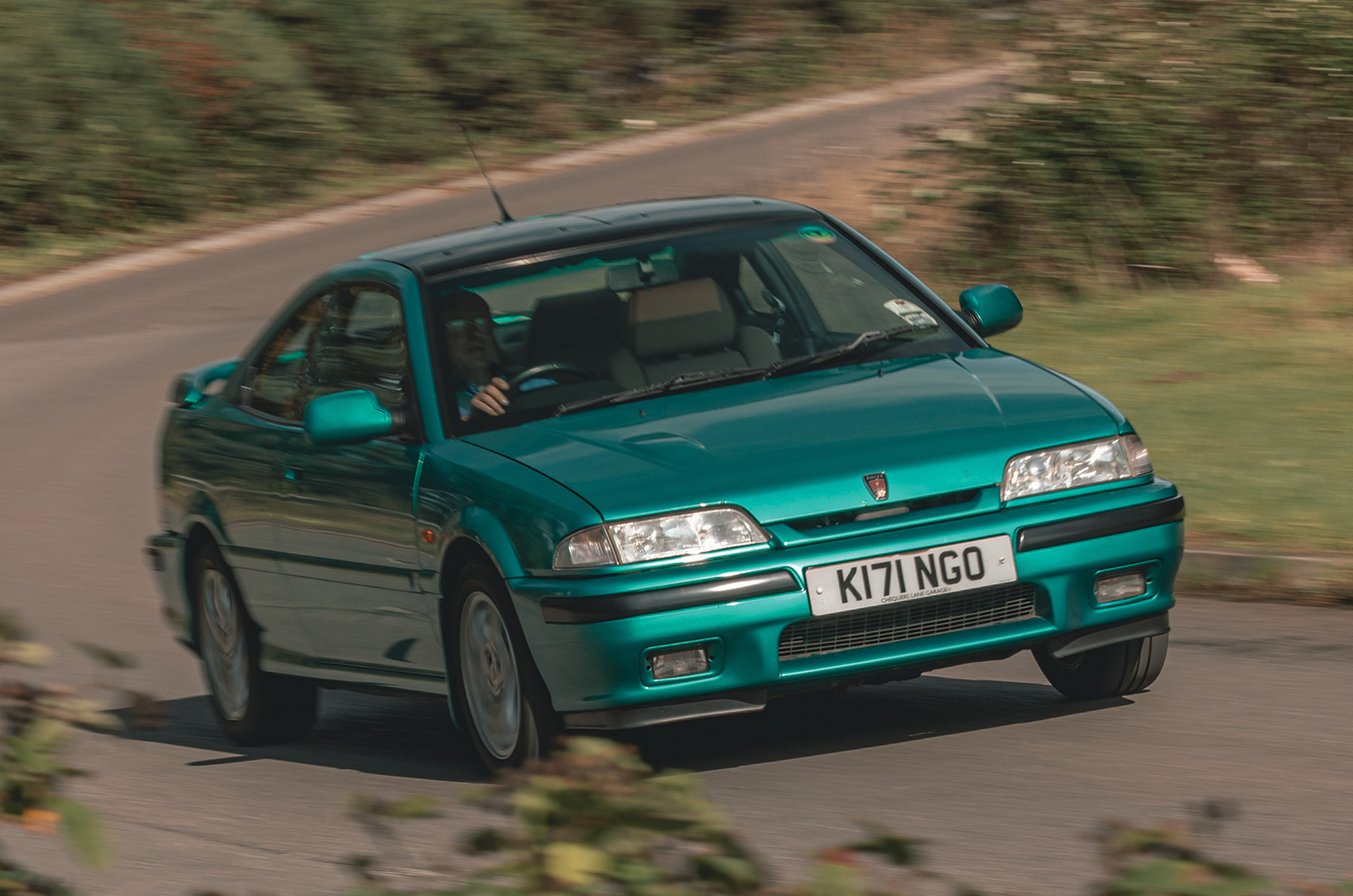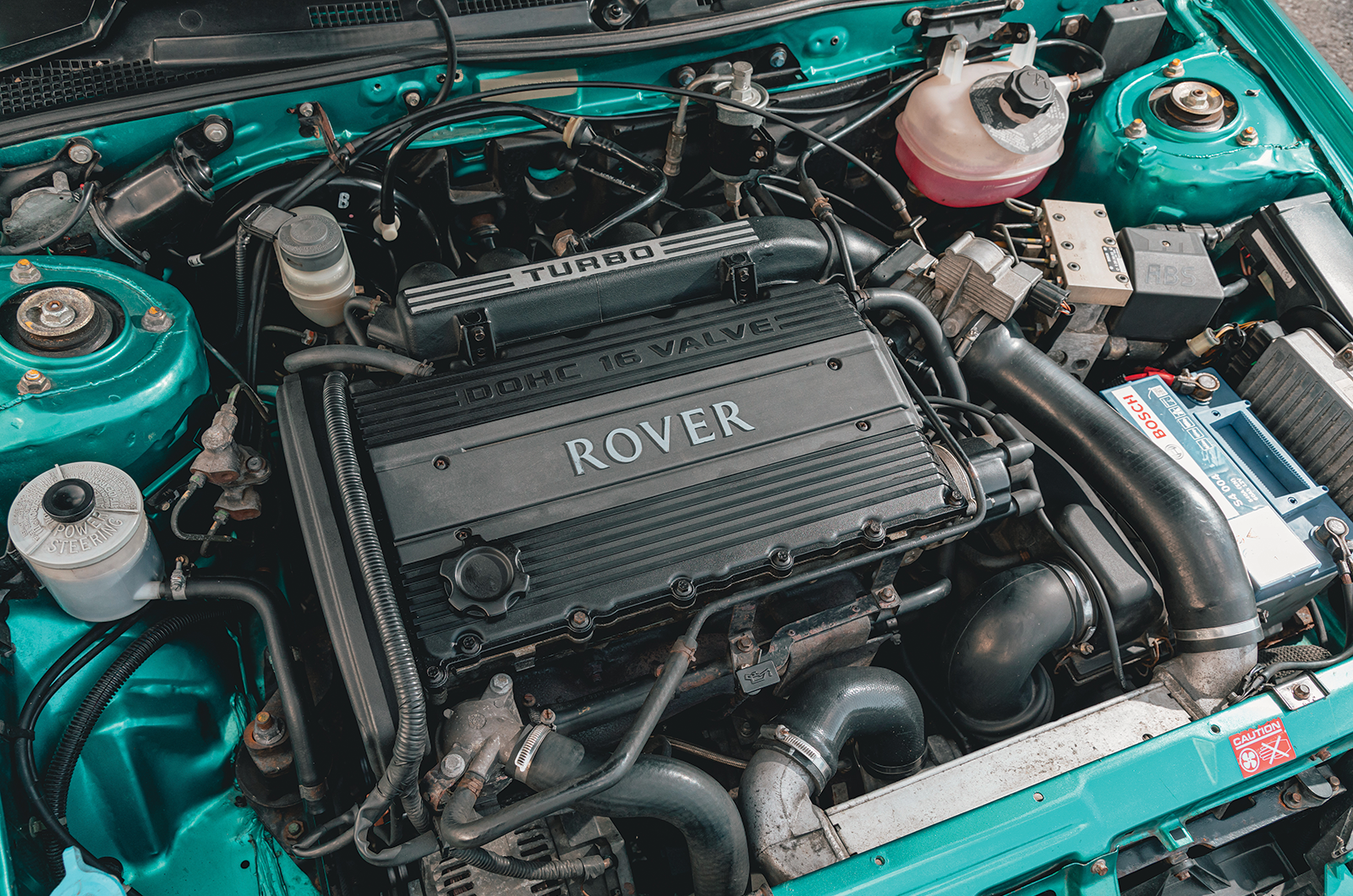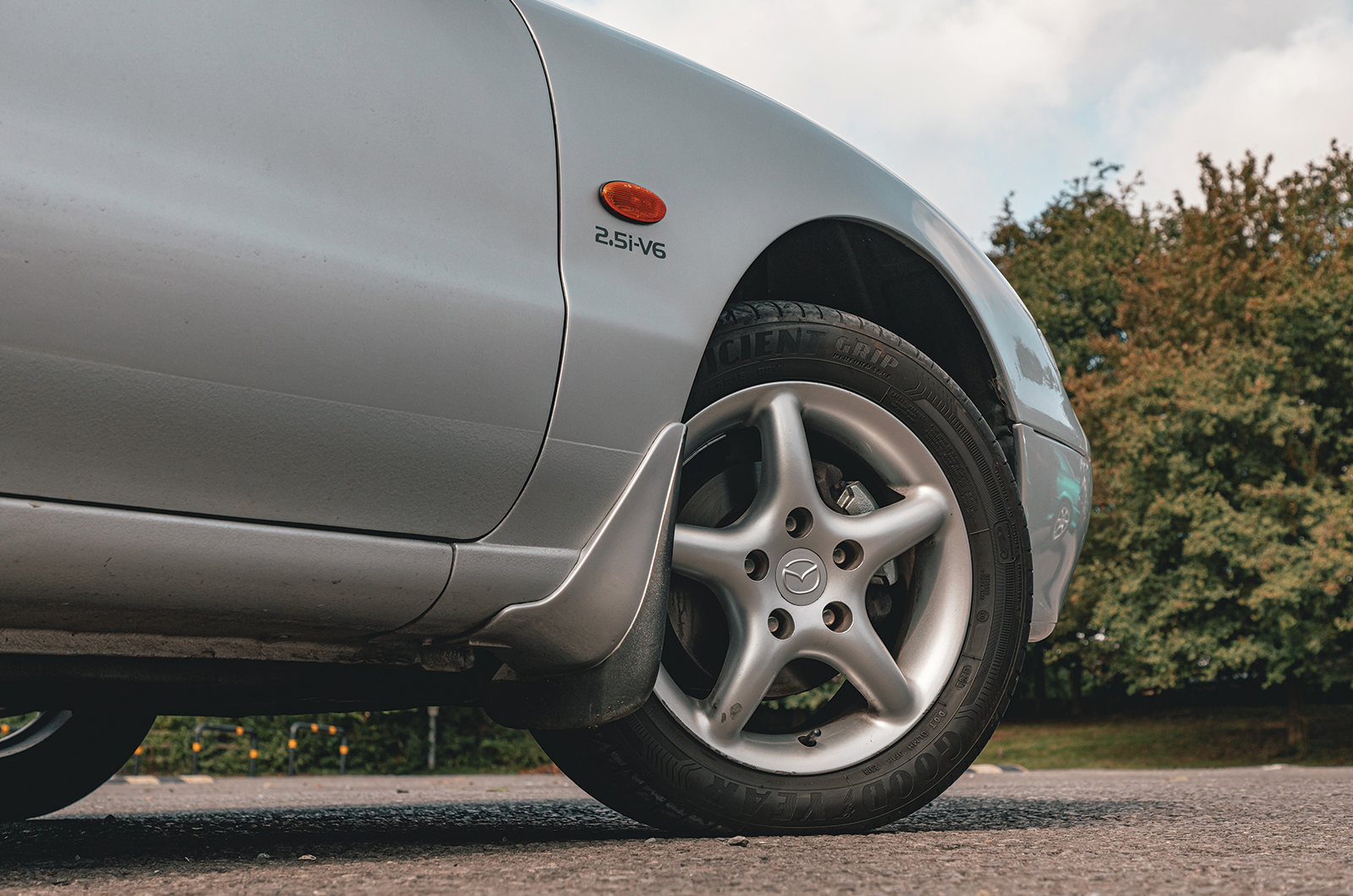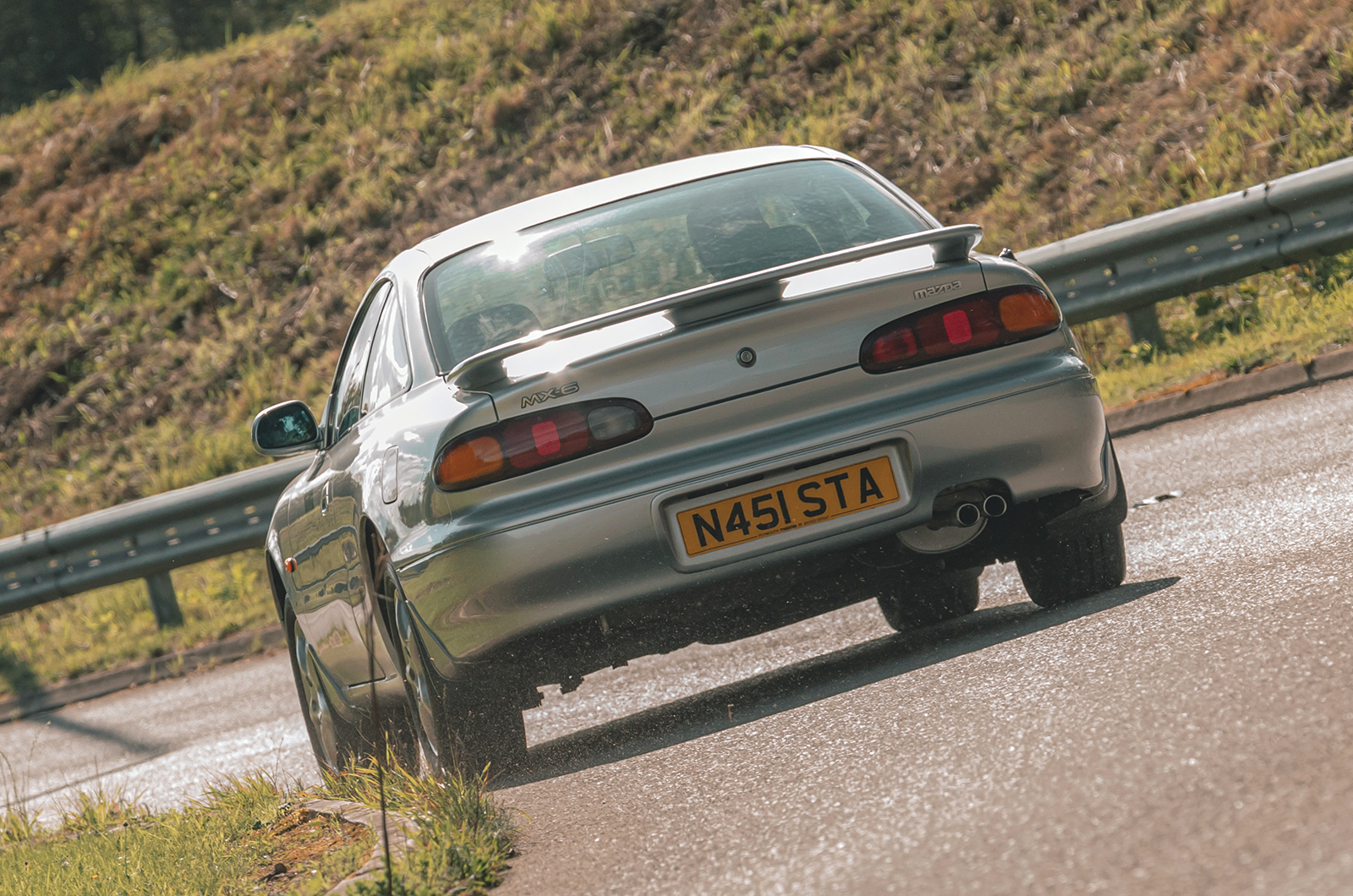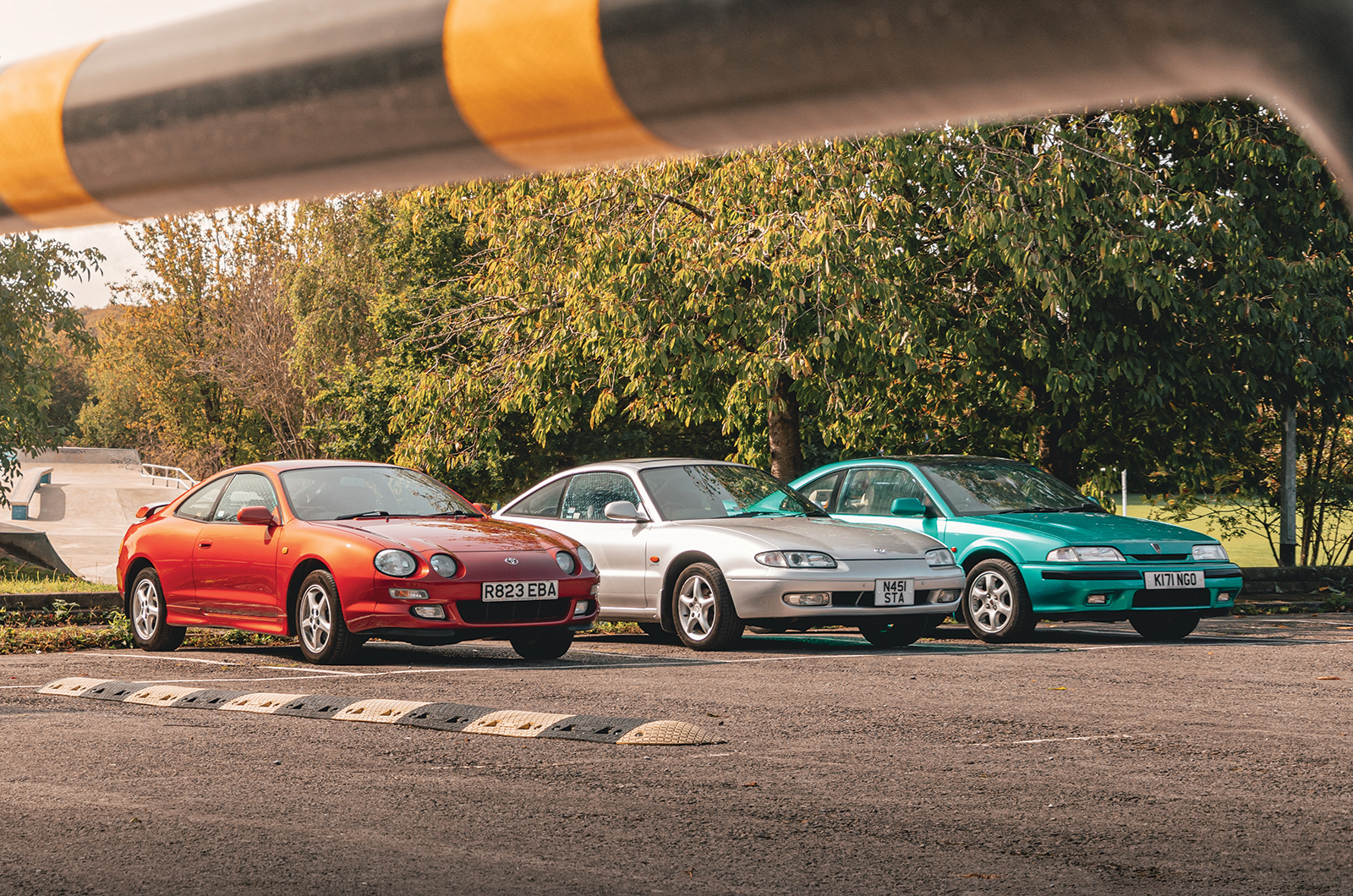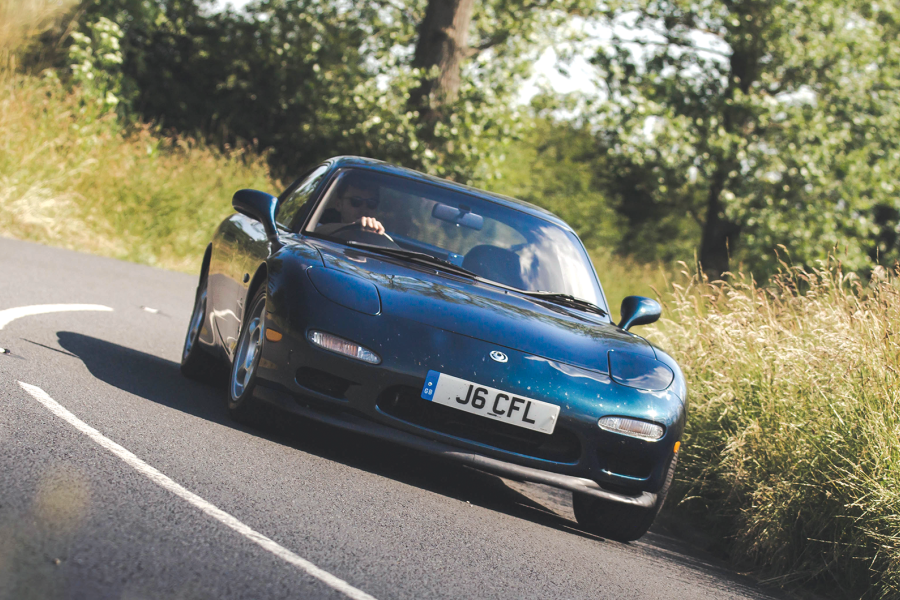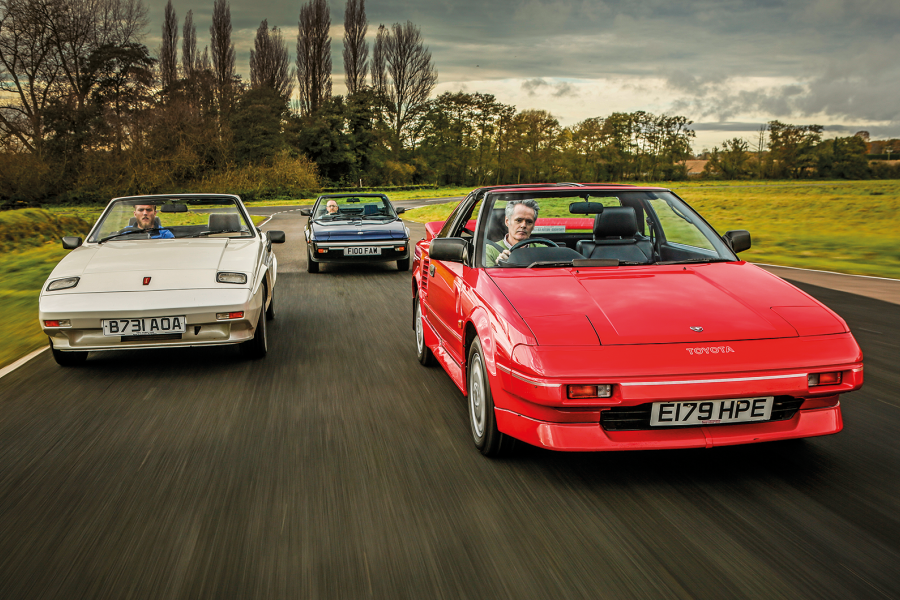Bearing the 200 name, the Rover doesn’t attempt to hide its family-car origins.
But it does have the good fortune of that car being a dynamic leader in its class, which you might not say of a Toyota Corolla.
It’s delightfully chuckable thanks to quick, reactive steering and the great directional agility bestowed by its short overhangs and low profile.
Fantastic vision gives the driver the confidence to make the best use of the chassis’ abilities, too.
Toyota’s trick 3S-GE ‘four’ has variable intake and forged internals
The Rover feels light and bright thanks to its large glasshouse – except for the back seats, where the relatively thick C-pillars darken things.
This playful, lightweight and lively chassis is brilliant fun in the lesser 216i and naturally aspirated 220 versions of the Rover coupé, but is a bit overwhelmed by the performance of the turbocharged T-series.
The brakes don’t feel quite strong enough and there’s that hefty dose of torquesteer, which the Zexel-Gleason Torsen differential can’t fully control.
The Rover 220 turbo has lots of torquesteer despite its trick differential
All power-assisted Rover 200s have slightly odd steering, with a vagueness both at dead-ahead, at high speed, and when under load, mid-corner.
Not so unnerving when you’re playfully throwing around a 111bhp 216, but more of a concern here.
The Torsen diff interferes even further, with the steering wheel desperate to self-centre whenever the weight comes off the front wheels over a mid-corner undulation.
‘Rover’s 2-litre T-series couldn’t be less subtle if it tried: it’s got a whacking great turbo, and it’s considerably faster than its rivals’
It’s firm over those bumps, too, but while the T-bar roof does encourage a few rattles, there is a feeling of quality inside the Rover that’s missing in the Toyota.
The dash top, steering wheel and doorcards are made of soft, plush-feeling plastics.
But, as on its exterior, the 220’s interior has a split personality.
The centre stack, a flimsy-looking thing designed by Honda (and which it had stopped making in Japan by 1992), drags down the ambience.
The Rover’s turbocharged T-series engine has plenty of low-end grunt, with 174lb ft of torque available at 2100rpm
It’s a bit of an old-school hot-hatch experience then, the Rover.
You cling on tight to the helm, aware that the engine clearly has more power than the chassis was ever built for, and do your best to hustle it down the road.
It never feels sophisticated, but it’s a thrilling challenge.
Stepping into the Mazda from either of the other two is to feel as if you’re going into a much more mature car.
This Mazda MX-6 sports dealer-fitted MX-5 alloy wheels
Its springing is that bit softer, coping with bumps far better, yet it isn’t roly-poly as a result.
The low centre of gravity provided by its squat V6 and sleek glasshouse is noticeable, allowing it to corner with real composure and grace.
Its rear axle never bounces around a corner as the Rover and Toyota are prone to, despite the 220 having the most advanced rear suspension on paper.
Mazda’s all-alloy V6 engine weighs little more than its ‘four’
With its supple ride, mini V6, and the extra length in its body, it’s clear Mazda was pitching the MX-6 as much as a budget GT as a sports coupé.
It’s never as chuckable as the Rover, while its steering isn’t quite as precise as the Celica’s, but it’s the most confidence-inspiring chassis nonetheless, and the only one here that feels truly sorted.
The Rover is quicker from point-to-point, for sure, but it requires bravery where the MX-6 provides easy pace.
‘With its supple ride, mini V6 and the extra length in its body, the Mazda MX-6 is as much a budget GT car as a sports coupé’
Similarly, it’s the only car that has an interior that implies any luxury.
Though the plastics aren’t quite as nice as some of the Rover’s, nor is its dash quite as swooping as the Celica’s, it doesn’t rattle over bumps, road noise is hushed and every piece of the cabin fits together with real precision.
It might look plain by modern standards, but it feels a cut above, and its low beltline provides brilliant vision, too.
The Rover 220 turbo’s swooping roofline is at odds with its blocky base
Today, relative ubiquity has made the Celica the bargain buy of the trio.
Some are only just falling out of mainstream use, a testimony to their reliability and practicality.
It’s the all-rounder of the group, but lacks that bit of spark for all its sensibility.
The 220 turbo is the hooligan, something you’d never have said of a Rover 20 years before – or a decade after.
The Toyota Celica GT tiptoes on its small wheels
It’s not refined, or serious, but it’s great fun.
If you were to take just one down a back-road to put a smile on your face, you’d pick the Tomcat.
And yet, from its silky-smooth engine, through ahead-of-its-time styling, to its refined chassis, it’s the MX-6 that really impresses.
Unlike the other two here, it’s a vehicle from a manufacturer with a point to prove and the money to back it up.
Mazda’s present image, compared to that before the 1990s – admittedly with the help of the MX-5, 323F and RX-7 – suggests this range-topper worked.
Images: Max Edleston
Thanks to: 7 Star Car Sales; Rover Coupé Owners’ Club; Paul Charlesworth; Kevin Willis
Factfiles
Toyota Celica GT
- Sold/number built 1993-’99/17,779 (total UK sales)
- Construction steel monocoque
- Engine iron-block, alloy-head, dohc 1998cc 16v ‘four’, fuel injection
- Max power 173bhp @ 7000rpm
- Max torque 137lb ft @ 4800rpm
- Transmission five-speed manual, FWD
- Suspension independent, by MacPherson struts, anti-roll bar f/r
- Steering power-assisted rack and pinion
- Brakes vented front, solid rear discs, with servo and ABS
- Length 14ft 6in (4420mm)
- Width 5ft 9in (1750mm)
- Height 4ft 3in (1300mm)
- Wheelbase 8ft 4in (2540mm)
- Weight 2645lb (1199kg)
- Mpg 32
- 0-60mph 8.3 secs
- Top speed 137mph
- Price new £19,230 (1993)
- Price now £2500-10,000*
Mazda MX-6
- Sold/number built 1991-’97/537,748 (including related Ford Probe)
- Construction steel monocoque
- Engine all-alloy, dohc-per-bank 2497cc 24v V6, fuel injection
- Max power 165bhp @ 5600rpm
- Max torque 163lb ft @ 4800rpm
- Transmission five-speed manual, FWD
- Suspension independent, by MacPherson struts, anti-roll bar f/r
- Steering power-assisted rack and pinion
- Brakes vented front, solid rear discs, with servo and ABS
- Length 15ft 2in (4615mm)
- Width 5ft 9in (1750mm)
- Height 4ft 4in (1310mm)
- Wheelbase 8ft 7in (2610mm)
- Weight 2712lb (1230kg)
- Mpg 28
- 0-60mph 7.5 secs
- Top speed 134mph
- Price new £19,245 (1993)
- Price now £2500-10,000*
Rover 220 turbo coupé
- Sold/number built 1992-’95/708,003 (all R8-generation 200s)
- Construction steel monocoque
- Engine iron-block, alloy-head, dohc 1994cc 16v ‘four’, turbocharger and fuel injection
- Max power 197bhp @ 6000rpm
- Max torque 174lb ft @ 2100rpm
- Transmission five-speed manual, FWD
- Suspension independent, at front by MacPherson struts rear multi-link, coil springs, telescopic dampers; anti-roll bar f/r
- Steering power-assisted rack and pinion
- Brakes vented front, solid rear discs, with servo and ABS
- Length 14ft (4270mm)
- Width 5ft 6in (1680mm)
- Height 4ft 6in (1370mm)
- Wheelbase 8ft 4in (2550mm)
- Weight 2612lb (1185kg)
- Mpg 30
- 0-60mph 6.2 secs
- Top speed 150mph
- Price new £18,790 (1993)
- Price now £5000-15,000*
*Prices correct at date of original publication
Enjoy more of the world’s best classic car content every month when you subscribe to C&SC – get our latest deals here
READ MORE
Buyer’s guide: MG ZT/ZT-T & Rover 75
Street fighters: Mitsubishi 3000GT vs Toyota Supra vs Nissan 300ZX
Future classic: Mazda MX-5 30th
Charlie Calderwood
Charlie Calderwood is Classic & Sports Car’s Features Editor

